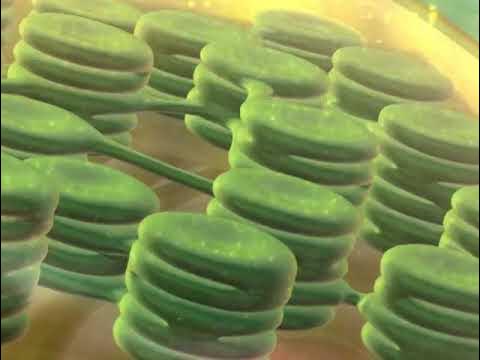Perbedaan Sel Hewan dan Sel Tumbuhan (Sel)
Summary
TLDRIn this video, Widyaningsih explains the key differences between animal and plant cells. Plant cells have unique structures such as chloroplasts, vacuoles, and cell walls, which are absent in animal cells. On the other hand, animal cells contain lysosomes and centrioles. The video covers the functions of various organelles such as the chloroplast for photosynthesis, the mitochondria for cell respiration, and the nucleus for regulating cell activities. It also discusses the role of white blood cells (phagocytes) in fighting foreign bodies. The video promises to continue with a discussion on diffusion and osmosis in future episodes.
Takeaways
- 😀 Animal cells lack cell walls, chloroplasts, and large vacuoles, which are present in plant cells.
- 😀 Plant cells have chloroplasts for photosynthesis, large vacuoles for food storage, and a cell wall for structural protection.
- 😀 Animal cells contain lysosomes and centrioles, which are not found in plant cells.
- 😀 Chloroplasts in plant cells are responsible for photosynthesis, converting sunlight into energy.
- 😀 Vacuoles in plant cells store nutrients and help maintain turgor pressure.
- 😀 The plasma membrane in plant cells facilitates cell transport, and the cell wall serves as an outer protective barrier.
- 😀 Ribosomes are responsible for protein synthesis in both plant and animal cells.
- 😀 The mitochondria in both plant and animal cells are involved in cellular respiration to produce energy (ATP).
- 😀 The Golgi body in both plant and animal cells is responsible for cell secretion.
- 😀 Phagocyte cells (like white blood cells) play an important role in attacking and digesting foreign particles, utilizing lysosomes for intracellular digestion.
Q & A
What are the main differences between animal cells and plant cells as discussed in the video?
-The main differences include the presence of chloroplasts, vacuoles, and cell walls in plant cells, which are not found in animal cells. Animal cells, on the other hand, contain lysosomes and centrioles, which plant cells do not have.
What is the role of chloroplasts in plant cells?
-Chloroplasts are responsible for photosynthesis in plant cells. They are green in color and help convert light energy into chemical energy, which is stored in glucose.
What is the function of the vacuole in plant cells?
-The vacuole in plant cells serves as a storage space for food reserves, helping maintain the cell's shape and balance of water within the cell.
What is the function of the cell wall in plant cells?
-The cell wall acts as a protective barrier between plant cells, providing structural support and helping maintain the cell's shape.
How does the plasma membrane function in plant cells?
-The plasma membrane in plant cells serves as a transport system, controlling the movement of substances into and out of the cell.
What organelles are responsible for cellular respiration in both animal and plant cells?
-The mitochondria are responsible for cellular respiration in both animal and plant cells. They help convert glucose into ATP, which provides energy for the cell.
What is the role of the Golgi body in animal cells?
-The Golgi body in animal cells is involved in secretion, processing proteins, and packaging them into vesicles for transport outside the cell.
What are lysosomes and what do they do in animal cells?
-Lysosomes in animal cells are involved in intracellular digestion. They contain hydrolytic enzymes that break down waste material and cellular debris.
What is the role of the centrioles in animal cells?
-Centrioles in animal cells are involved in cell division. They help in the formation of the spindle fibers that separate chromosomes during mitosis.
What is the function of ribosomes in both plant and animal cells?
-Ribosomes are responsible for protein synthesis in both plant and animal cells. They help translate mRNA into proteins, which are essential for cellular functions.
Outlines

This section is available to paid users only. Please upgrade to access this part.
Upgrade NowMindmap

This section is available to paid users only. Please upgrade to access this part.
Upgrade NowKeywords

This section is available to paid users only. Please upgrade to access this part.
Upgrade NowHighlights

This section is available to paid users only. Please upgrade to access this part.
Upgrade NowTranscripts

This section is available to paid users only. Please upgrade to access this part.
Upgrade Now5.0 / 5 (0 votes)





